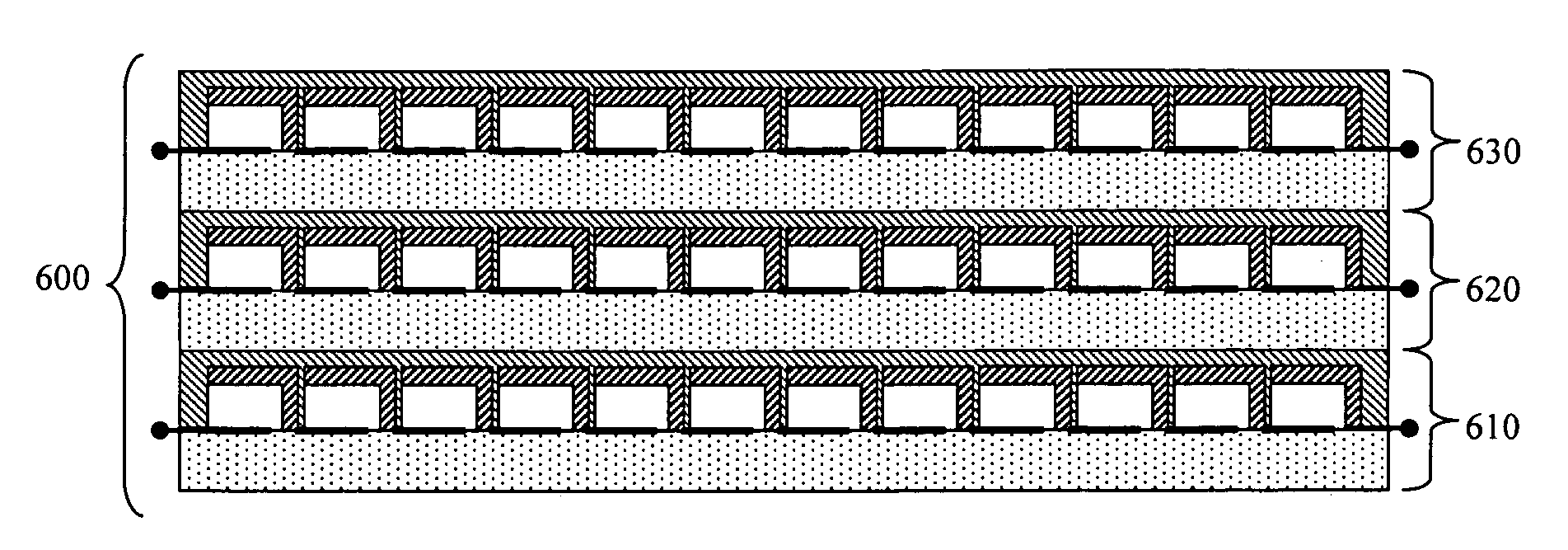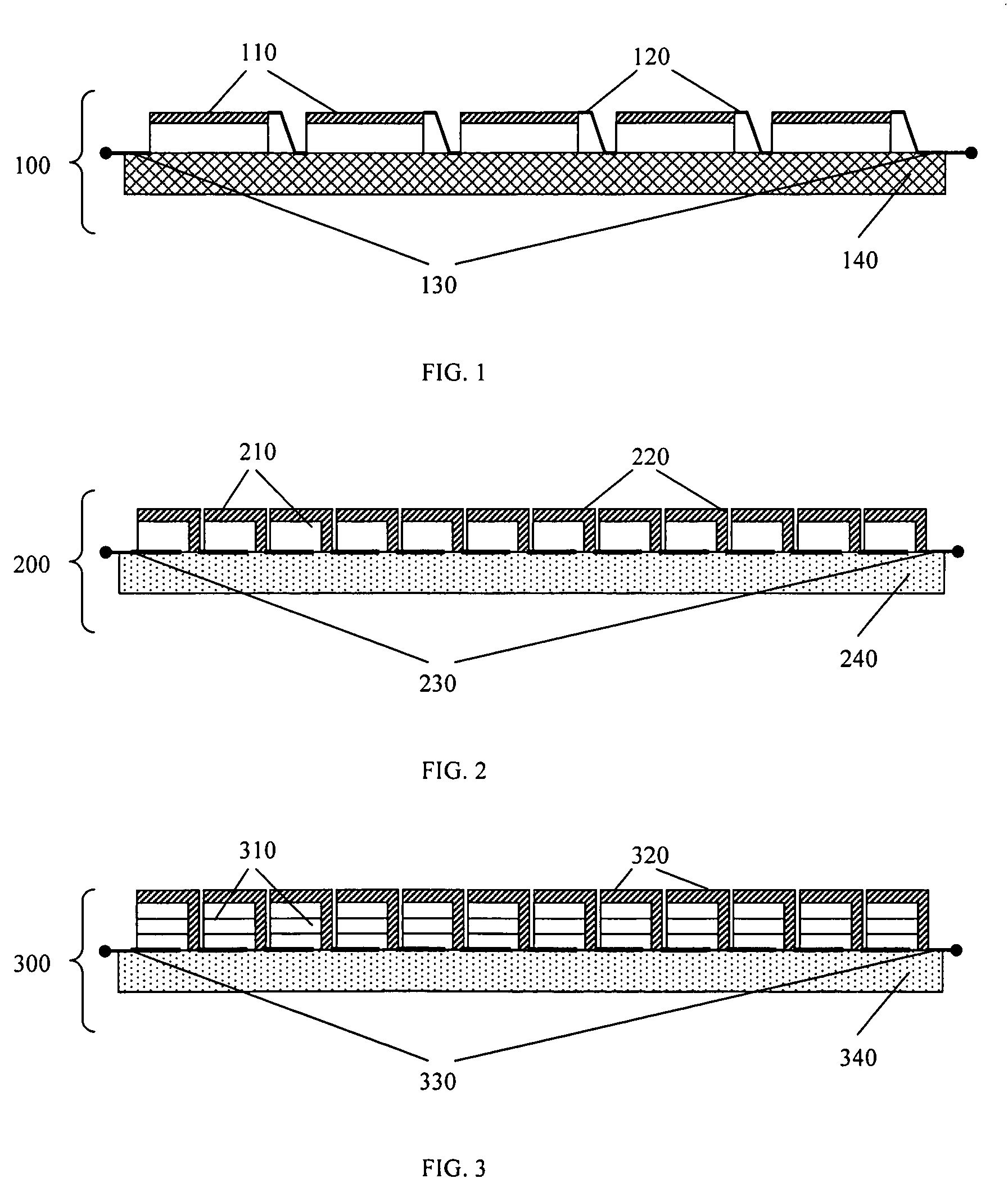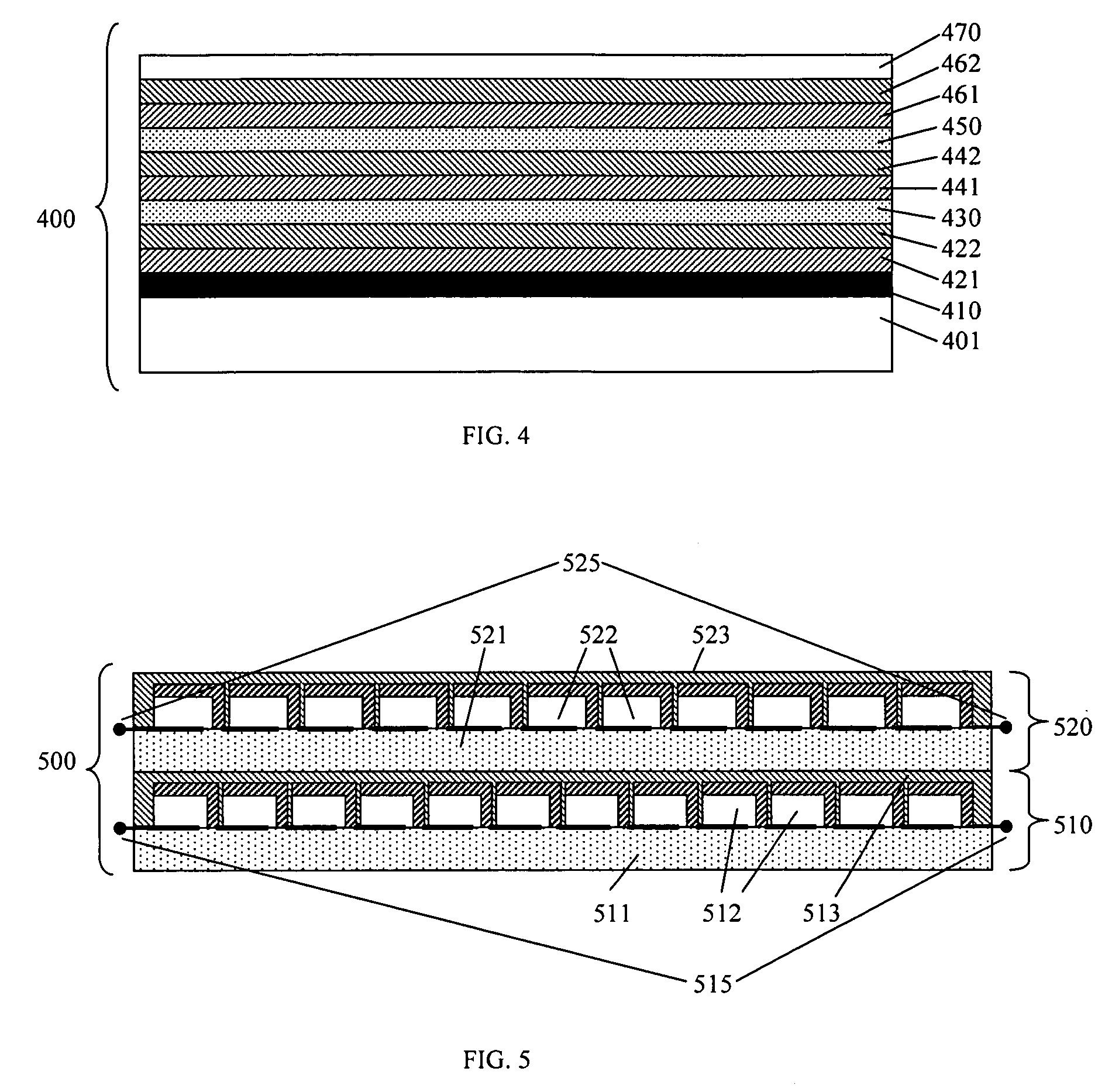Multi-junction PV module
a photovoltaic device and multi-junction technology, applied in the direction of pv power plants, sustainable manufacturing/processing, final product manufacturing, etc., can solve the problems of reducing affecting the efficiency of the device, and limiting the conversion efficiency of solar power into electricity of the device to a maximum of about 37%, so as to achieve high current protection diodes
- Summary
- Abstract
- Description
- Claims
- Application Information
AI Technical Summary
Benefits of technology
Problems solved by technology
Method used
Image
Examples
examples
[0065]In one embodiment of this invention, a two junction layer PV module may be produced as shown in FIG. 8. Bottom junction layer 810 may be made of several thin-film cells 812, which are monolithically integrated and connected electrically in series to form a single string. Corresponding thin-film semiconductor absorber material may be based on CuInSe2 compound and its alloys with Ga and S, more commonly known in the industry as CIGS. Similarly, top junction layer 820 may be also made of several CIGS-based cells 822, which are monolithically integrated and connected electrically in series into a single string. It may be preferred to adjust the CIGS compositions of cells 812 and 822 so that their respective optical bandgaps are about 1.1 eV and 1.7 eV. The respective compositions of cells 812 and 822 in this case may be close to CuIn0.8Ga0.2Se2 and CuGaSe2, for instance. Monolithic integration of these CIGS cells may be accomplished by laser and mechanical scribing. The top juncti...
PUM
 Login to View More
Login to View More Abstract
Description
Claims
Application Information
 Login to View More
Login to View More - R&D
- Intellectual Property
- Life Sciences
- Materials
- Tech Scout
- Unparalleled Data Quality
- Higher Quality Content
- 60% Fewer Hallucinations
Browse by: Latest US Patents, China's latest patents, Technical Efficacy Thesaurus, Application Domain, Technology Topic, Popular Technical Reports.
© 2025 PatSnap. All rights reserved.Legal|Privacy policy|Modern Slavery Act Transparency Statement|Sitemap|About US| Contact US: help@patsnap.com



